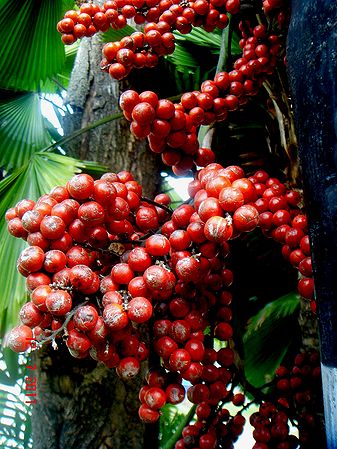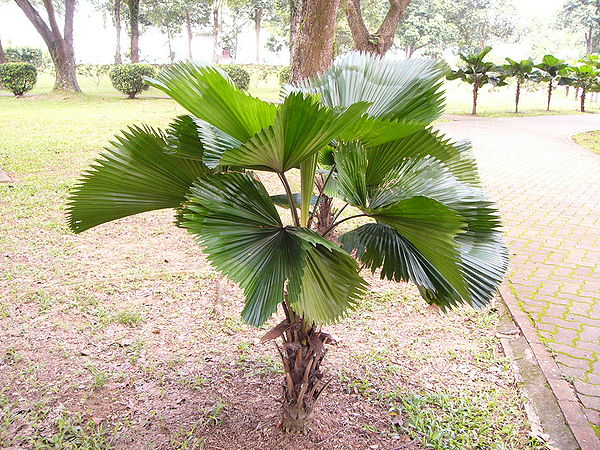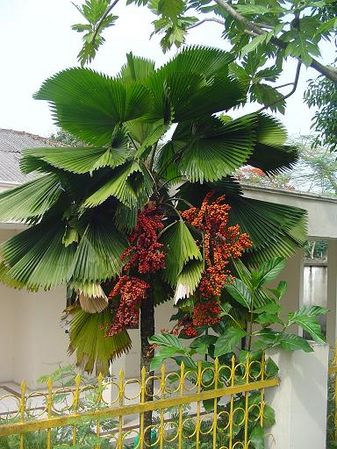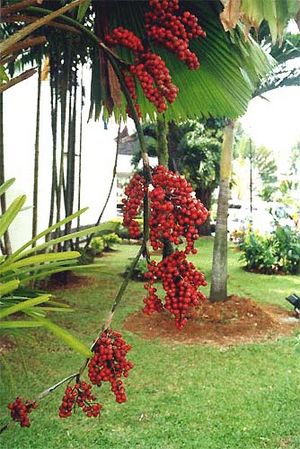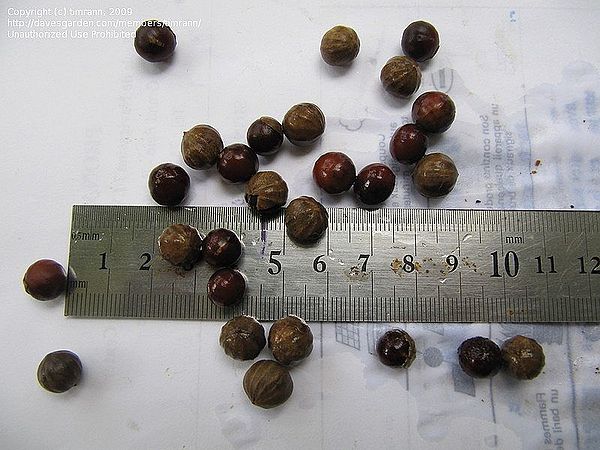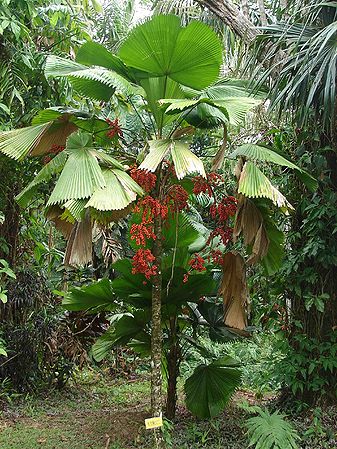Licuala grandis
| Licuala (lik-oo-AH-lah) grandis (GRAHN-dis) | |||||||
|---|---|---|---|---|---|---|---|
 Nong Nooch Botanical Gardens, Thailand. | |||||||
| Scientific Classification | |||||||
| |||||||
| Synonyms | |||||||
|
| |||||||
| Native Continent | |||||||
|
| |||||||
| Morphology | |||||||
| |||||||
| Culture | |||||||
|
| |||||||
| Survivability index | |||||||
|
| |||||||
| Common names | |||||||
|
| |||||||
Contents
Habitat and Distribution
Malaya, Santa Cruz Is., Society Is., and Vanuatu. Native to lowland rainforests of the Soloman Islands, and Vanuatu.
Description
Solitary trunk of up to 3 m in height and 5-6 cm in diam., Leaf circular, undivided and regularly pleated leaf; about 22 inch or more in diameter with a notched edge, with the old dry leaves persisting. Editing by edriic.
Culture
Licuala grandis likes moist soil and - when mature - is comfortable in full sun as long as the humidity is high. In the sub-tropics, where there are longer periods without rain this palm requires some shade and regular watering. Although there are Licuala grandis known to have survived temperatures of -1.5° C. it is advisable to plant this palm in regions only where temperatures do not fall below 3 degrees C.
Comments and Curiosities
The Licuala grandis is a truly out of the ordinary palm.It's beauty is deraigned from it's magnificient fan-like fronds, which dominate the palm at it's early age. I purchased a Licuala grandis from the Fairchild sale in November of 2003. It was a small palm and has prospered in a somewhat shaded location.It is far from a fast grower but is now over 3 feet tall. This is in the Palm Beach area and it has weathered easily a temperature of 40F. A year later, this specimen is finally trunking. On another interesting note, I found numerous 8 to 10 foot tall slender trunked specimens at Ann Norton Sculpture Gardens in West Palm Beach,Florida. Editing by edric.
Perhaps the most difficult weather condition experienced was our suceesion of Hurricanes and particularly Hurricane Wilma in 2005. The large fronds are simply not designed for wind exposure.The largest and most stunning specimens I have viewed were at Fairchild Gardens. These mature specimens are 10 to 15 feet tall with intriguing slender wood trunks. A curator estimated their age at close to fifty years.
Well known by now for its large, circular, simple, undivided and closely pleated leaves, this Licuala makes an unusual plant for indoors or out. The seed germinates readily and grows slowly but steadily in the tropical or warm subtropical garden, producing a slim trunk in the process. It can be planted in sun or full shade but should be out of the wind. (RPS.com)
External Links
References
Phonetic spelling of Latin names by edric.
Special thanks to Geoff Stein, (Palmbob) for his hundreds of photos.
Special thanks to Palmweb.org, Dr. John Dransfield, Dr. Bill Baker & team, for their volumes of information and photos.
Glossary of Palm Terms; Based on the glossary in Dransfield, J., N.W. Uhl, C.B. Asmussen-Lange, W.J. Baker, M.M. Harley & C.E. Lewis. 2008. Genera Palmarum - Evolution and Classification of the Palms. Royal Botanic Gardens, Kew. All images copyright of the artists and photographers (see images for credits).
- IMAGE GALLERY
Many Special Thanks to Ed Vaile for his long hours of tireless editing and numerous contributions.


















